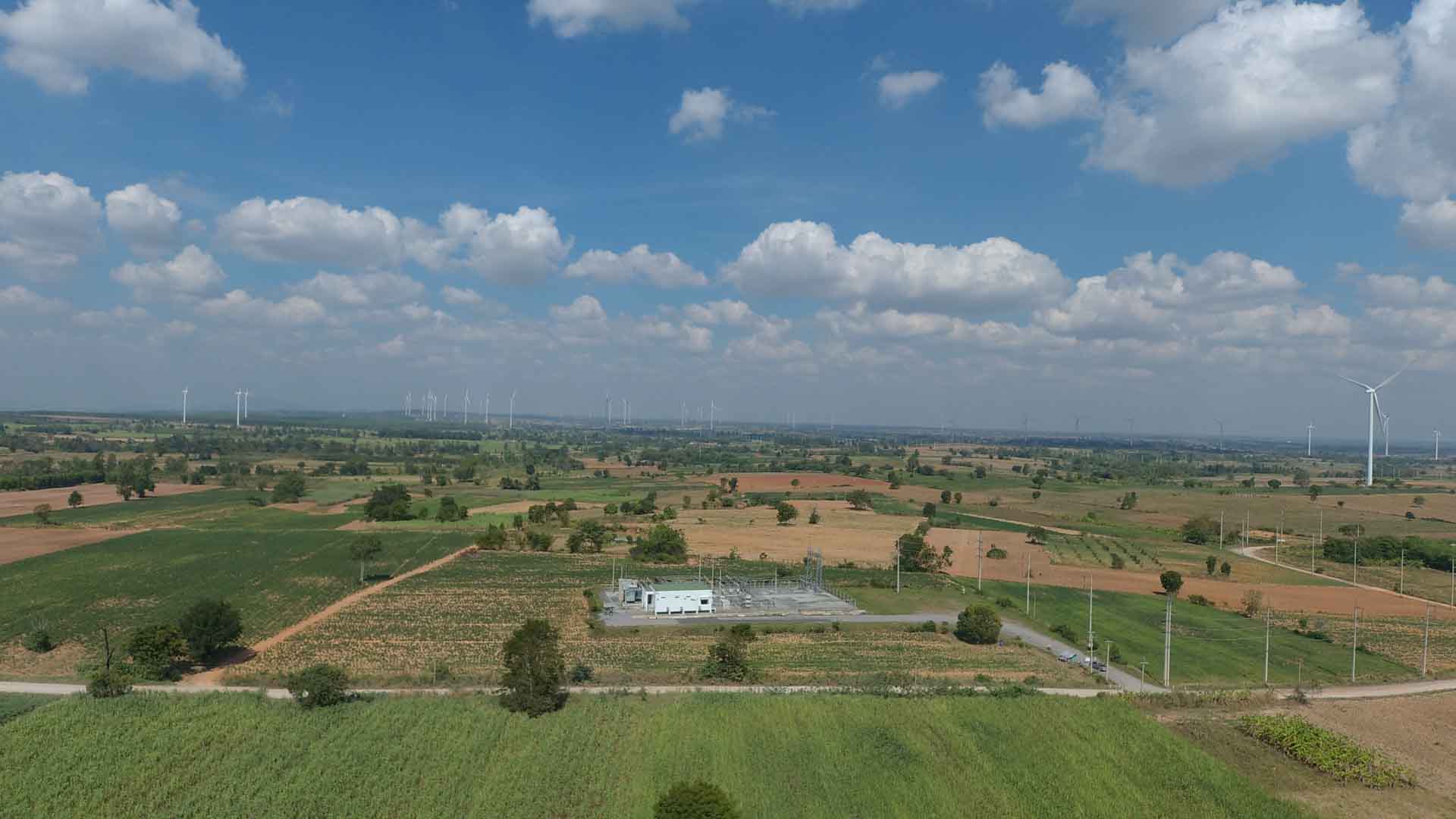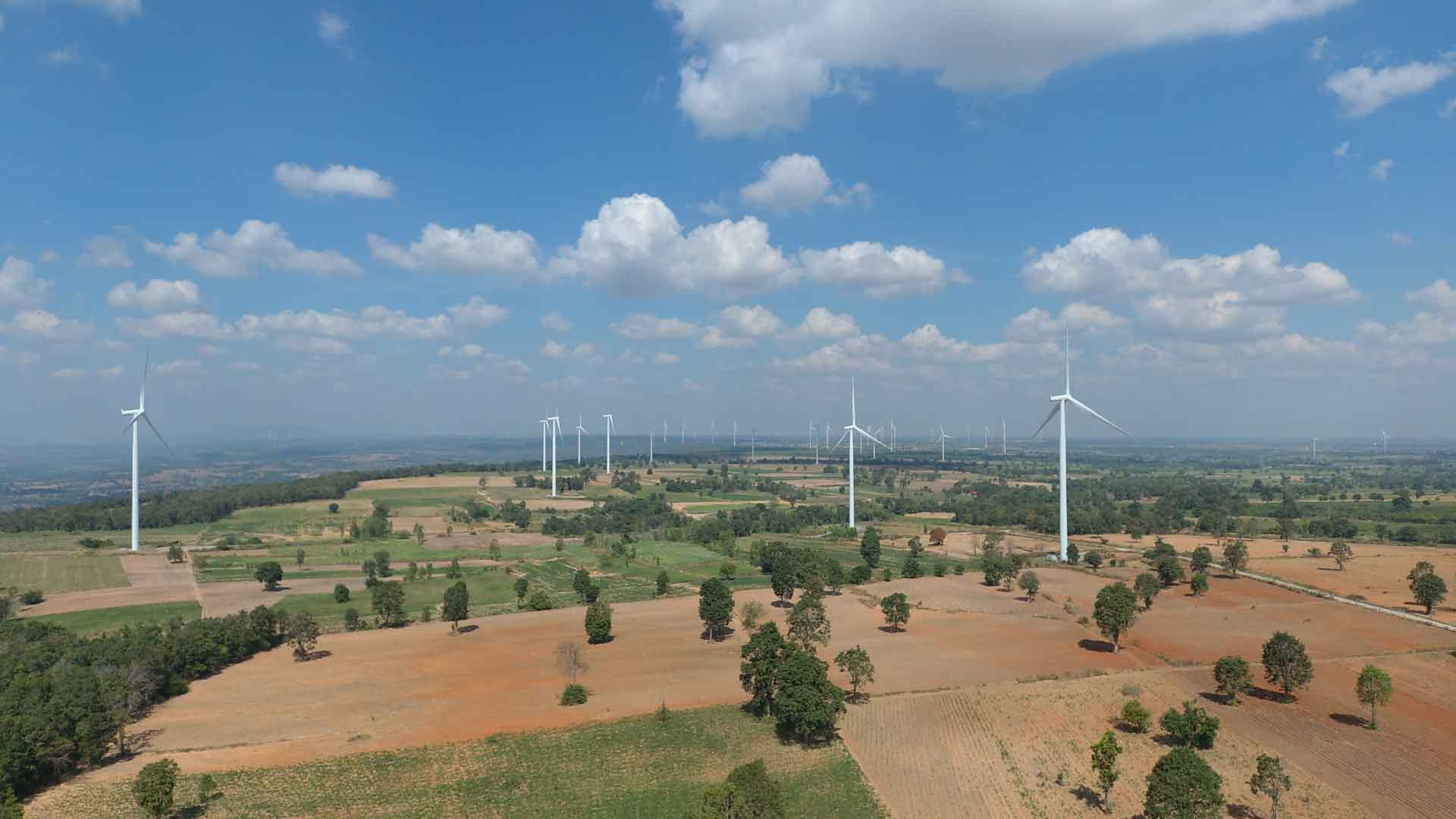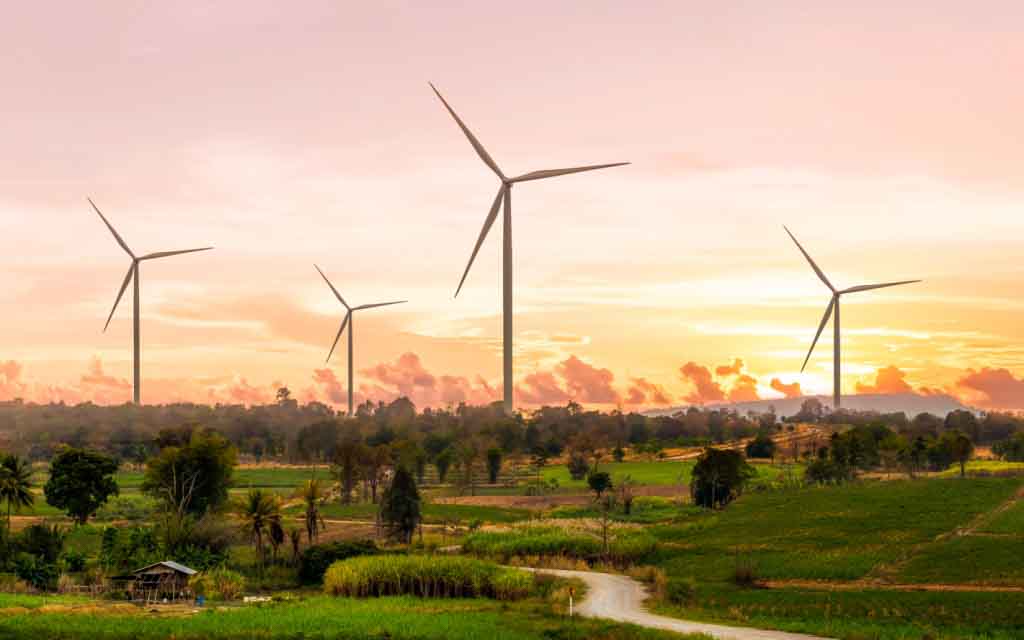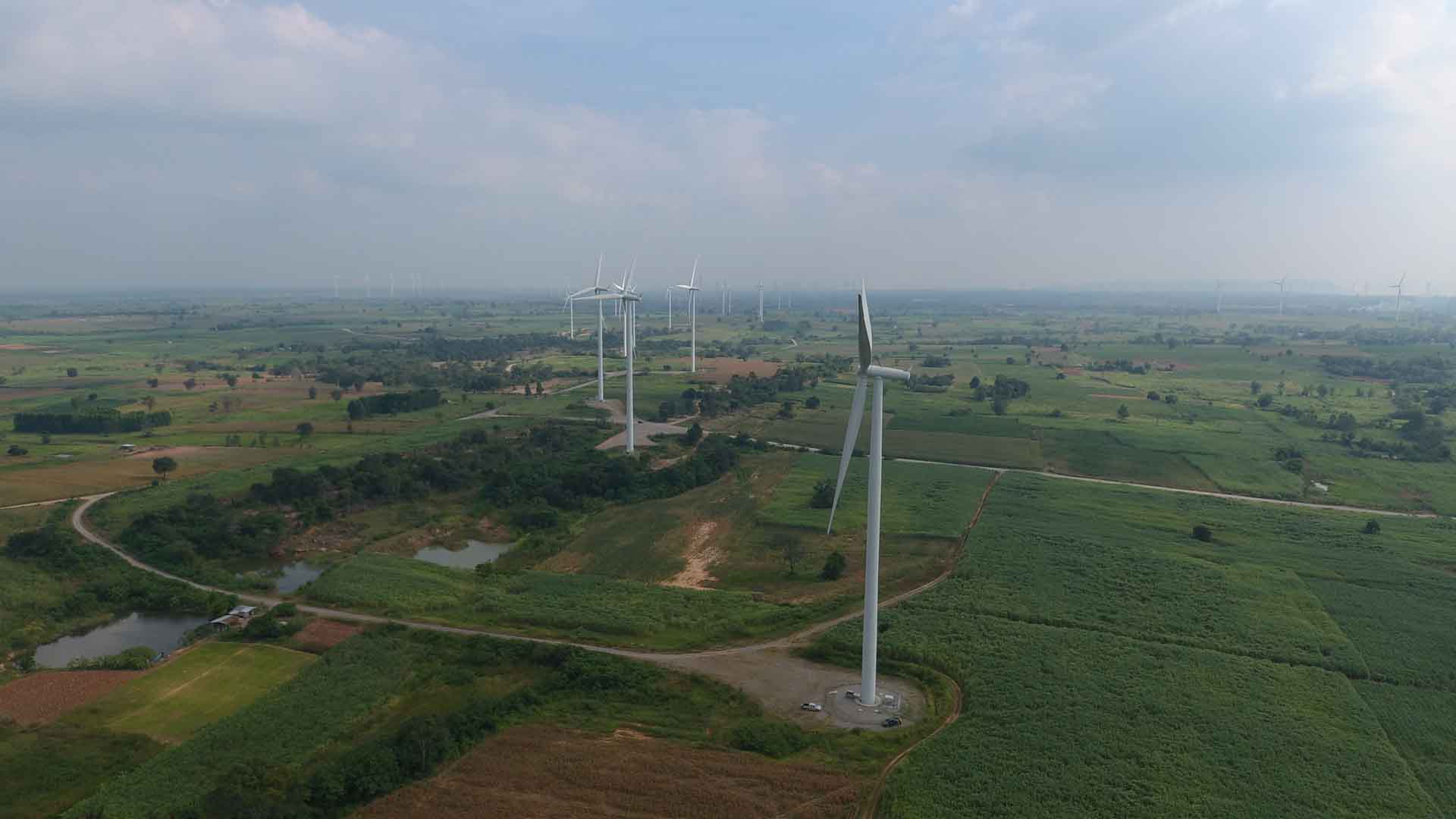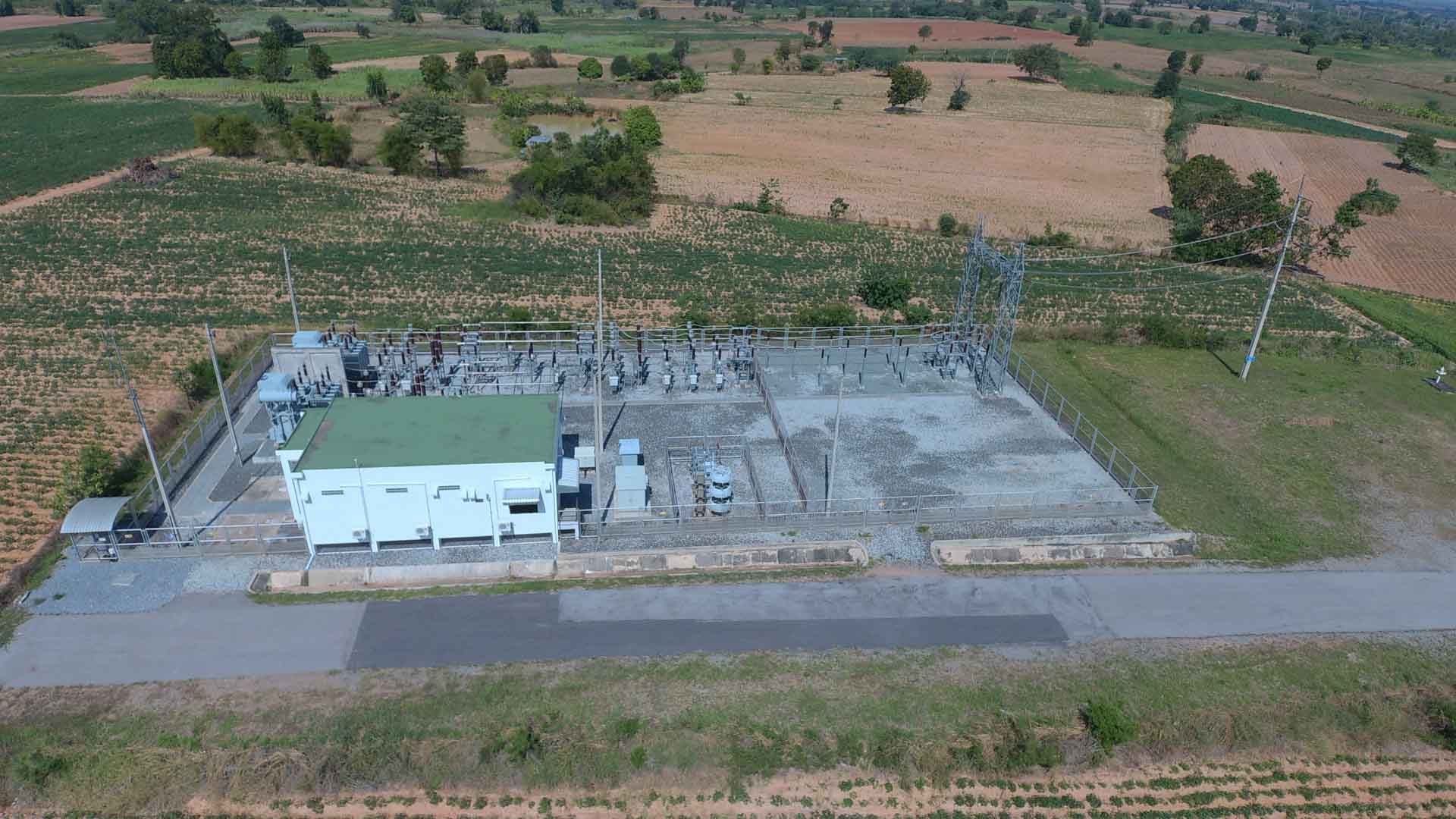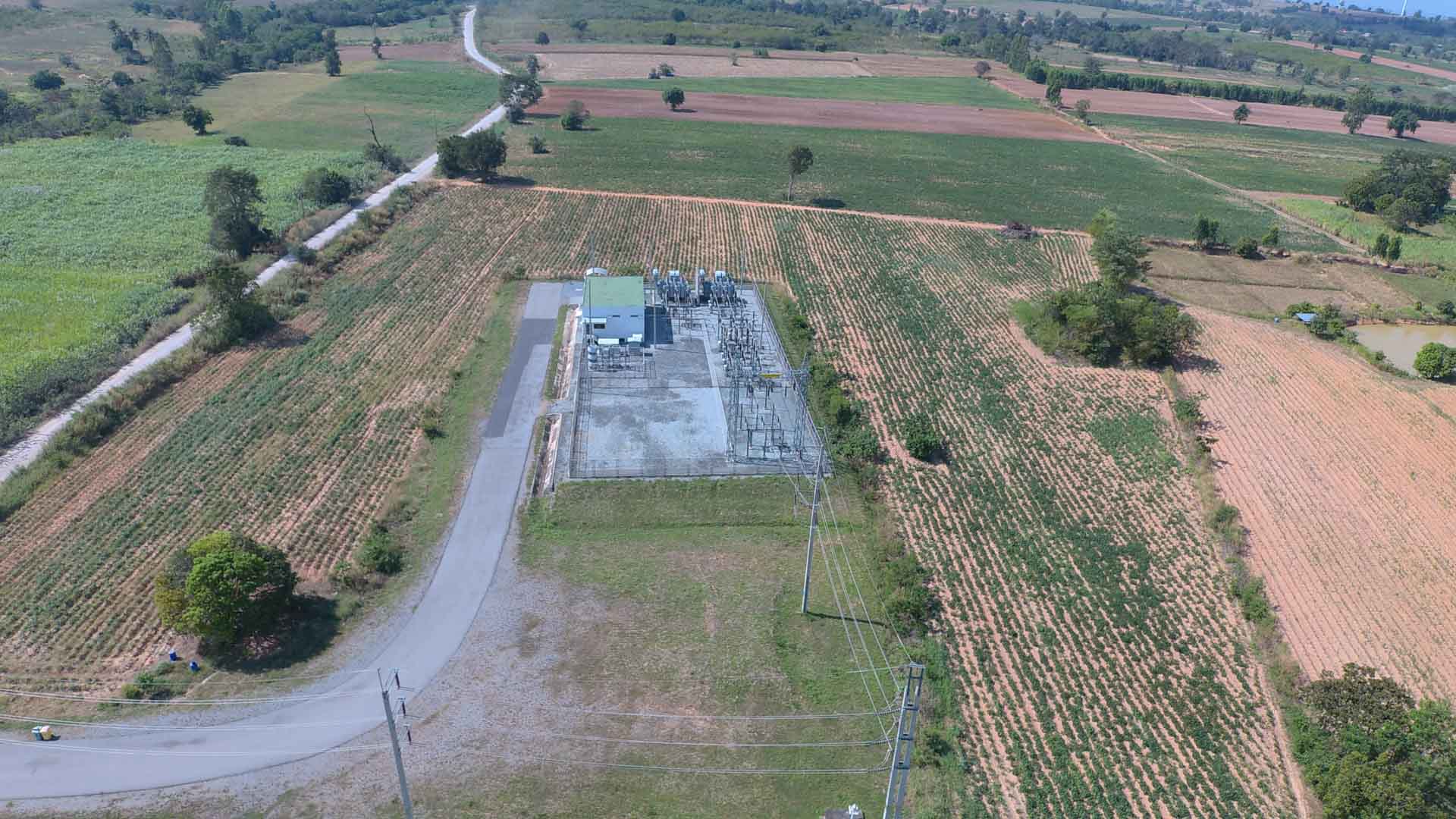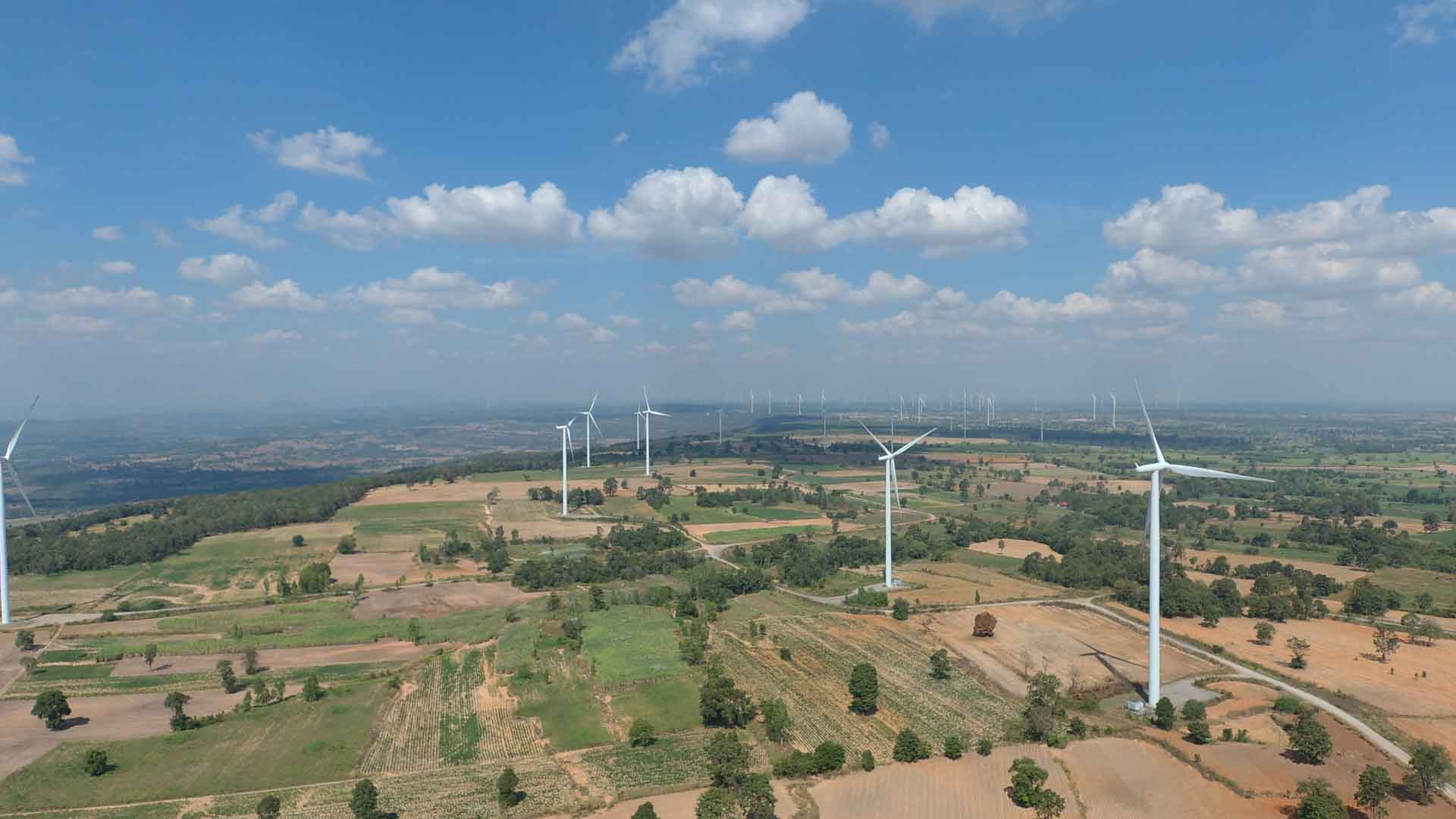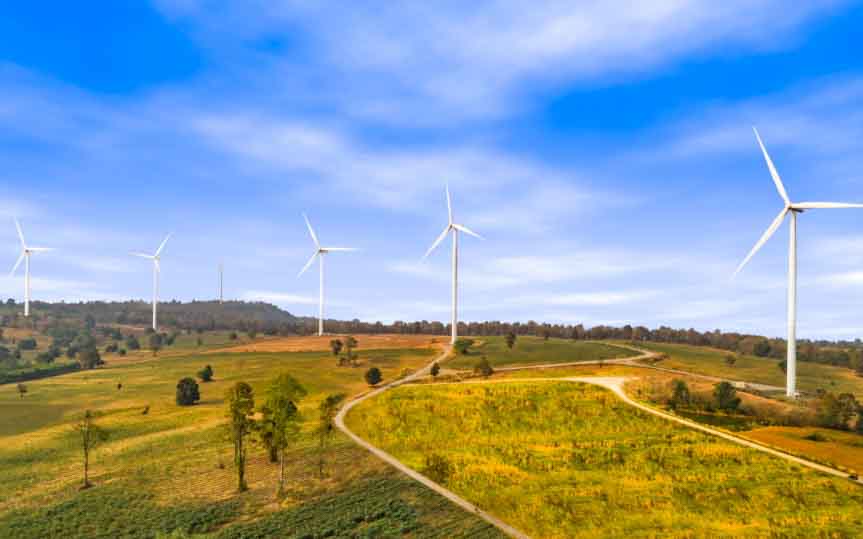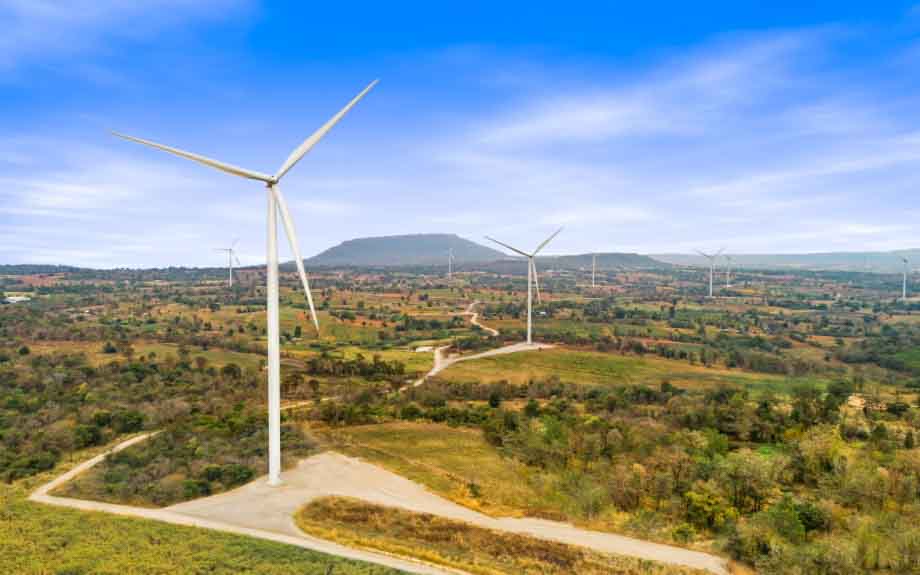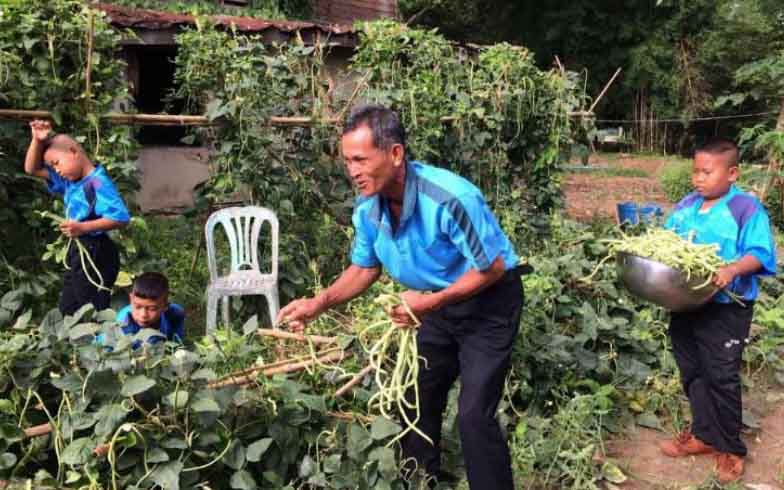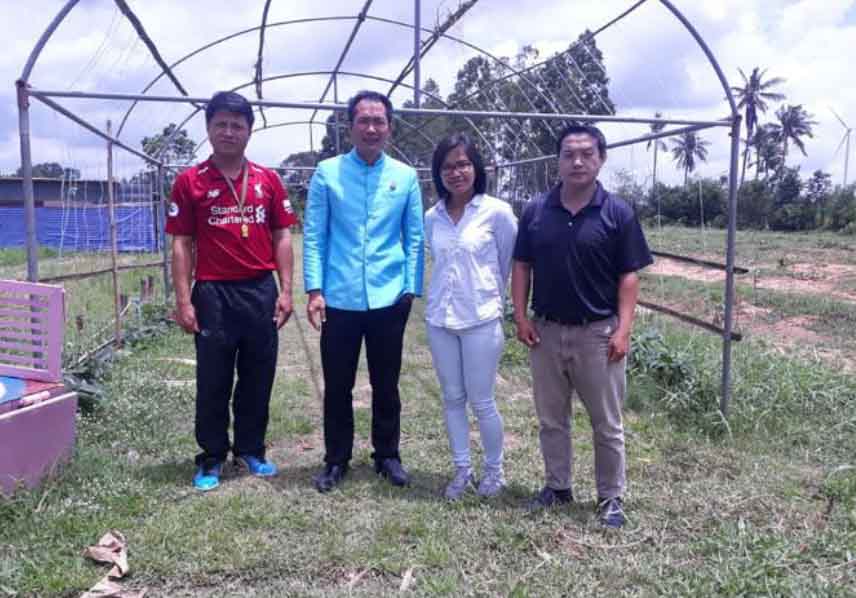Bringing renewable wnergy to the people of Thailand
A large share of Thailand’s electricity still comes from fossil fuels. In 2020 alone, natural gas accounted for over 60 percent of the country’s energy mix. Together with coal, fossil fuels make up nearly 85 percent of the energy supply. This harms the climate, creates dependence on imports – and drives up costs.
This is where the wind power project comes in: In the rural province of Nakhon Ratchasima, 45 wind turbines, each with a capacity of 2.3 MW, feed renewable electricity into the national grid. With a total installed capacity of 103.5 MW and an annual output of around 230 GWh, the project saves approximately 139,030 tons of CO₂ every year.
But the project delivers more than electricity. It creates jobs, boosts the local economy, and strengthens Thailand’s energy security. At the same time, it helps to significantly increase the share of renewable energy in the country.
Besides, this climate project brings several benefits to the local population and for the environment. A major focus is bringing more knowledge about clean energy and environmental topics to the local residents and students. For instance, through an organic farming project at a local school students learn about sustainable cultivation and nutrition by growing their own lunch ingredients.
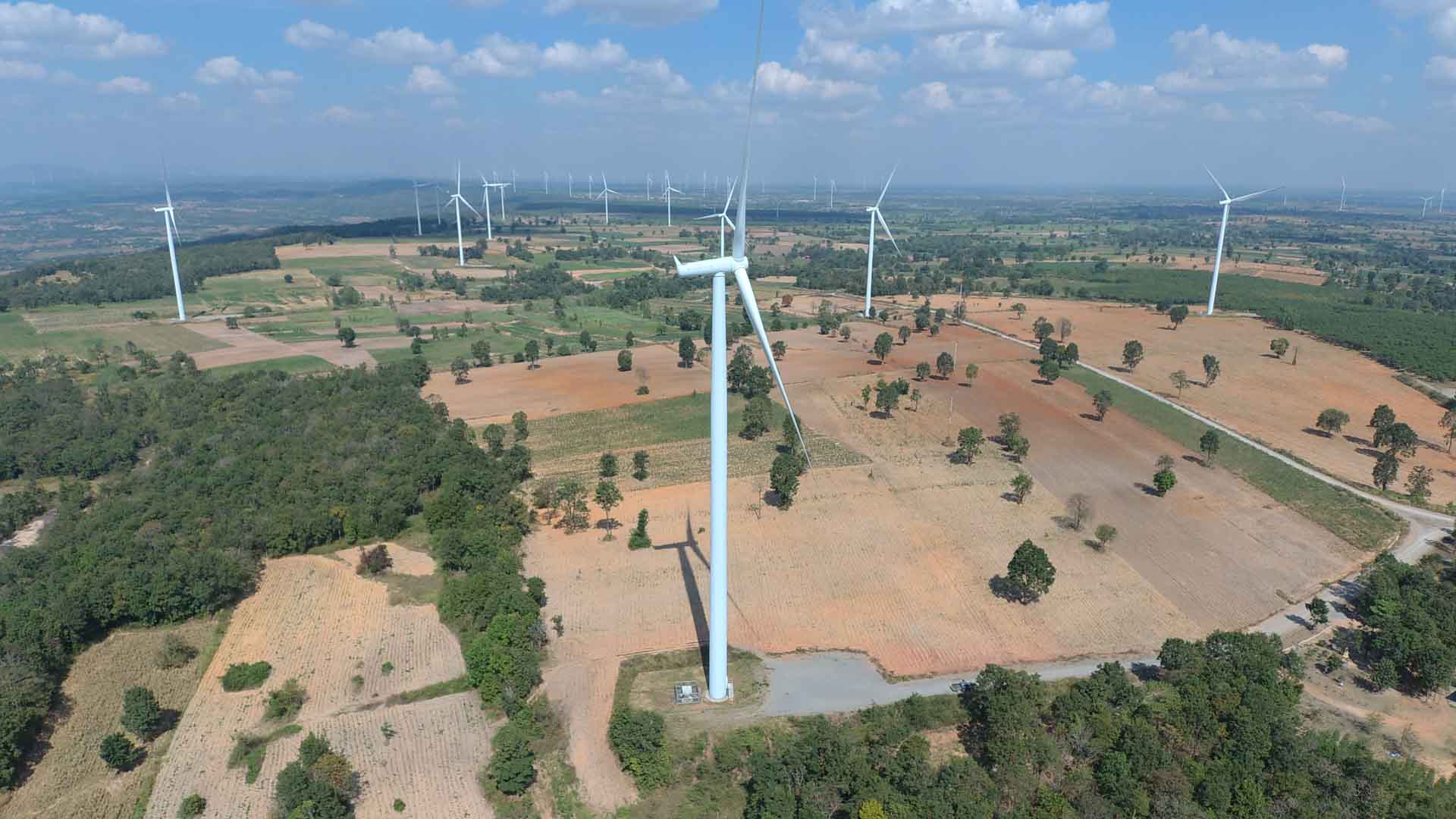
As the name suggests, wind turbines use the power of the wind to generate energy. During this process, a generator located inside the wind turbine converts kinetic energy into electrical energy. As energy is still mainly generated from fossil fuels in many areas around the world, clean wind energy can replace some of this fossil, high-emission energy and verifiably save CO2 emissions.
In most cases, the sustainably generated electricity from the wind power projects is fed into a regional power grid, which diversifies the power supply and improves energy security in regions that are frequently affected by power shortages and outages. A project often creates increased job opportunities for the local population and the area can be used for additional activities, such as agriculture. Wind power projects make an important contribution to a clean energy supply worldwide and contribute to sustainable development with respect to the UN Sustainable Development Goals (SDGs). Wind energy projects in the ClimatePartner portfolio are registered with international standards.
Explore our projects
Biochar for Climate Action, Healthy Soils, and Better Harvests
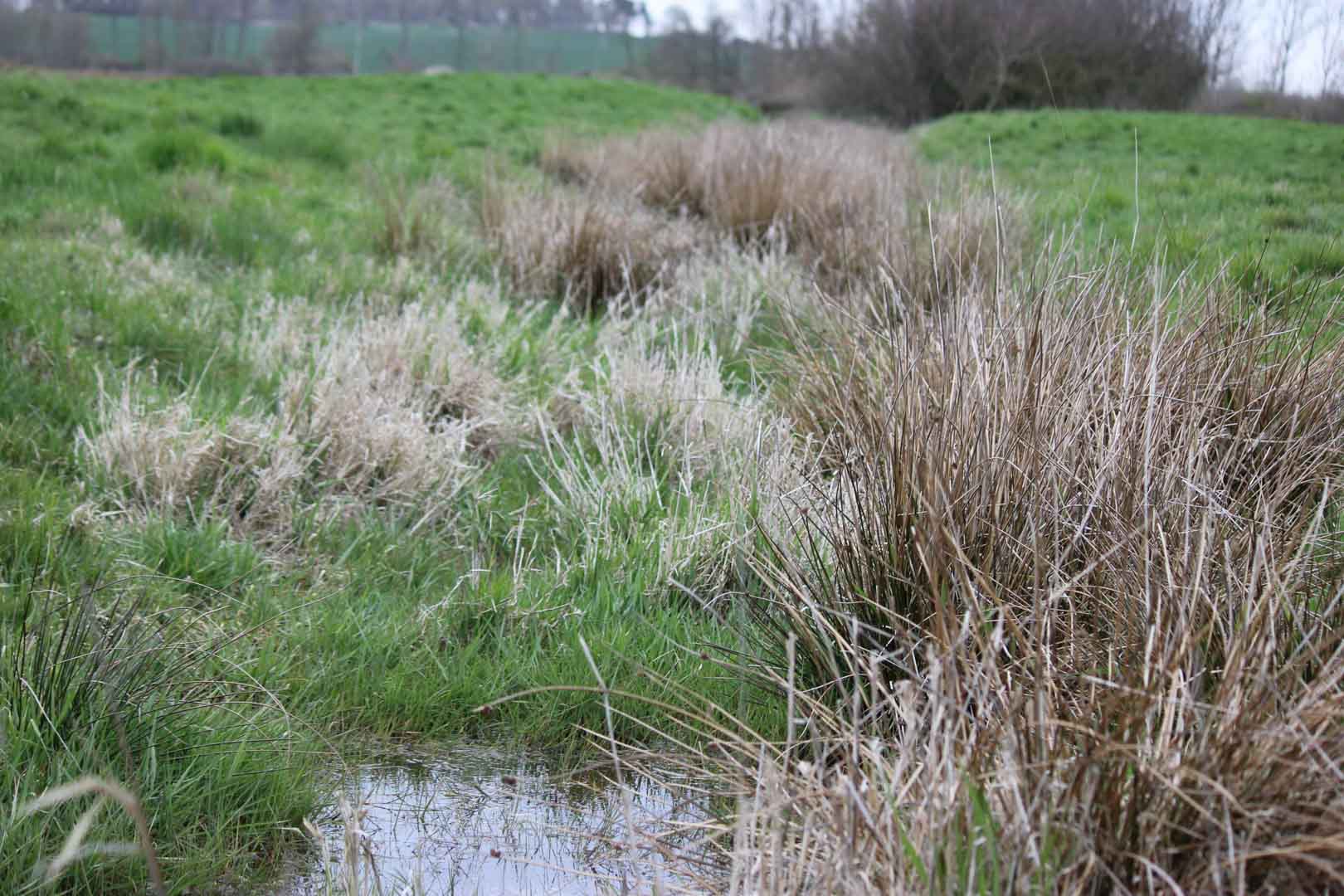
A certified climate project combined with additional commitment
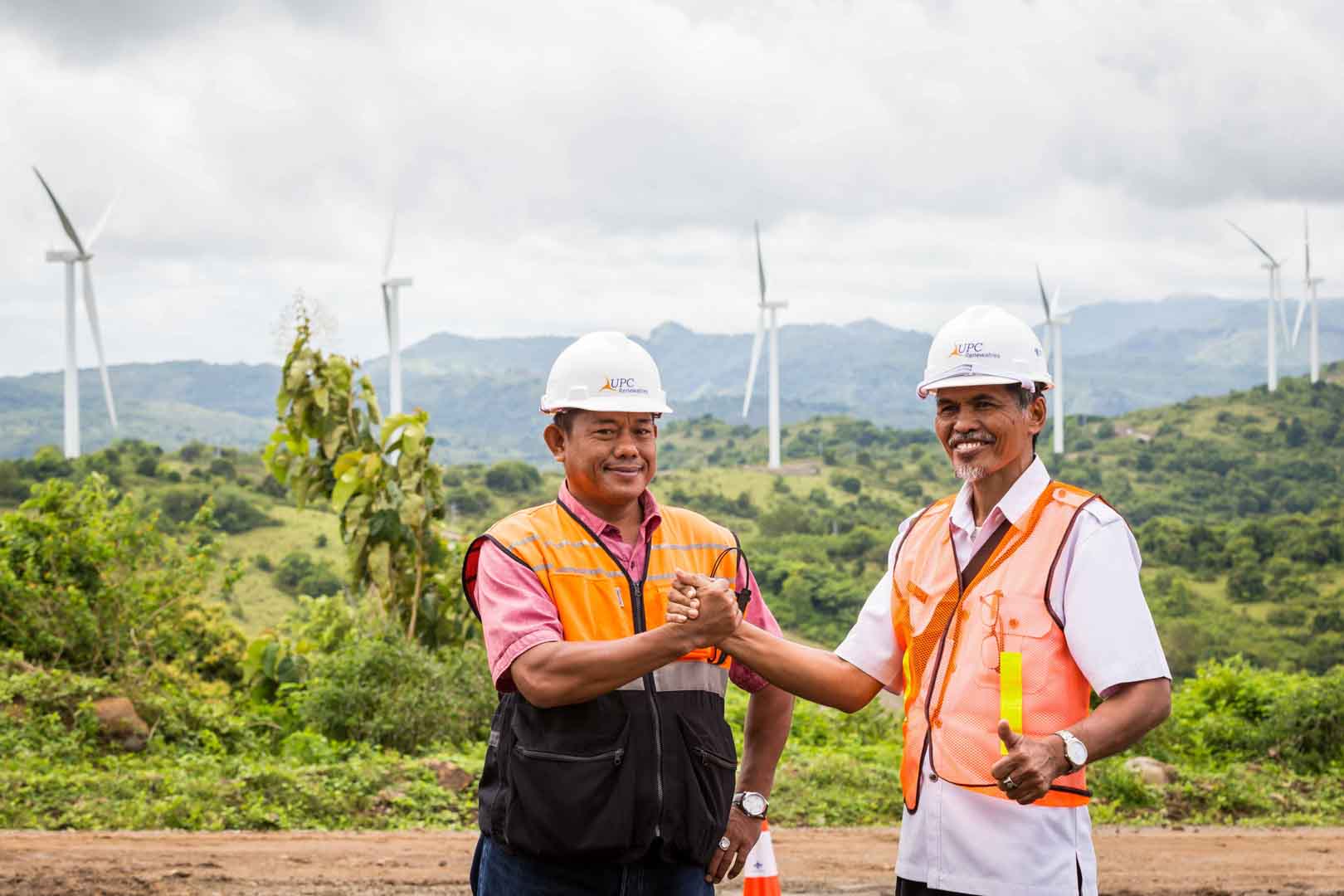
Expansion of renewable energy generation in Asia
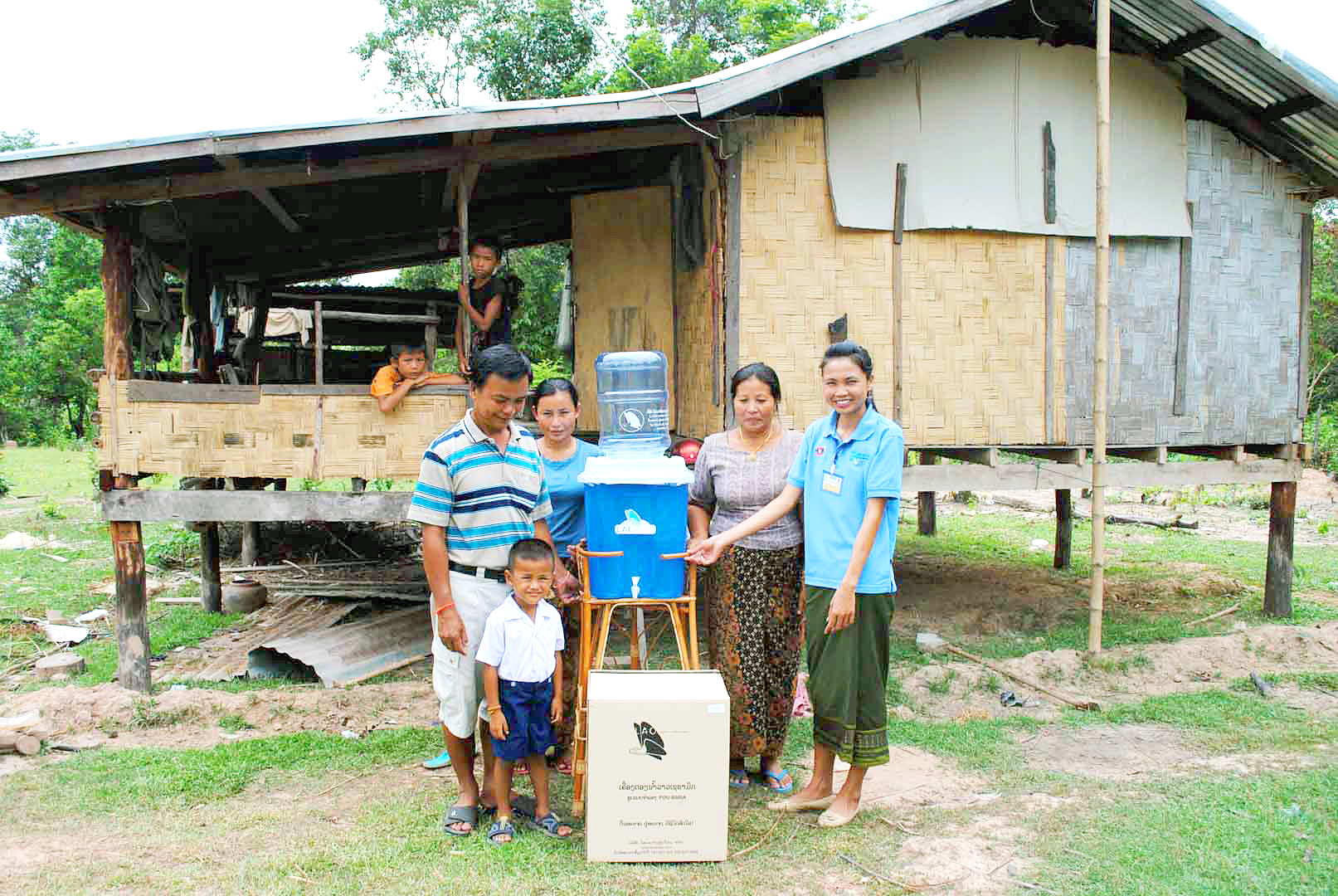
Ceramic water filters save CO2 and improve health
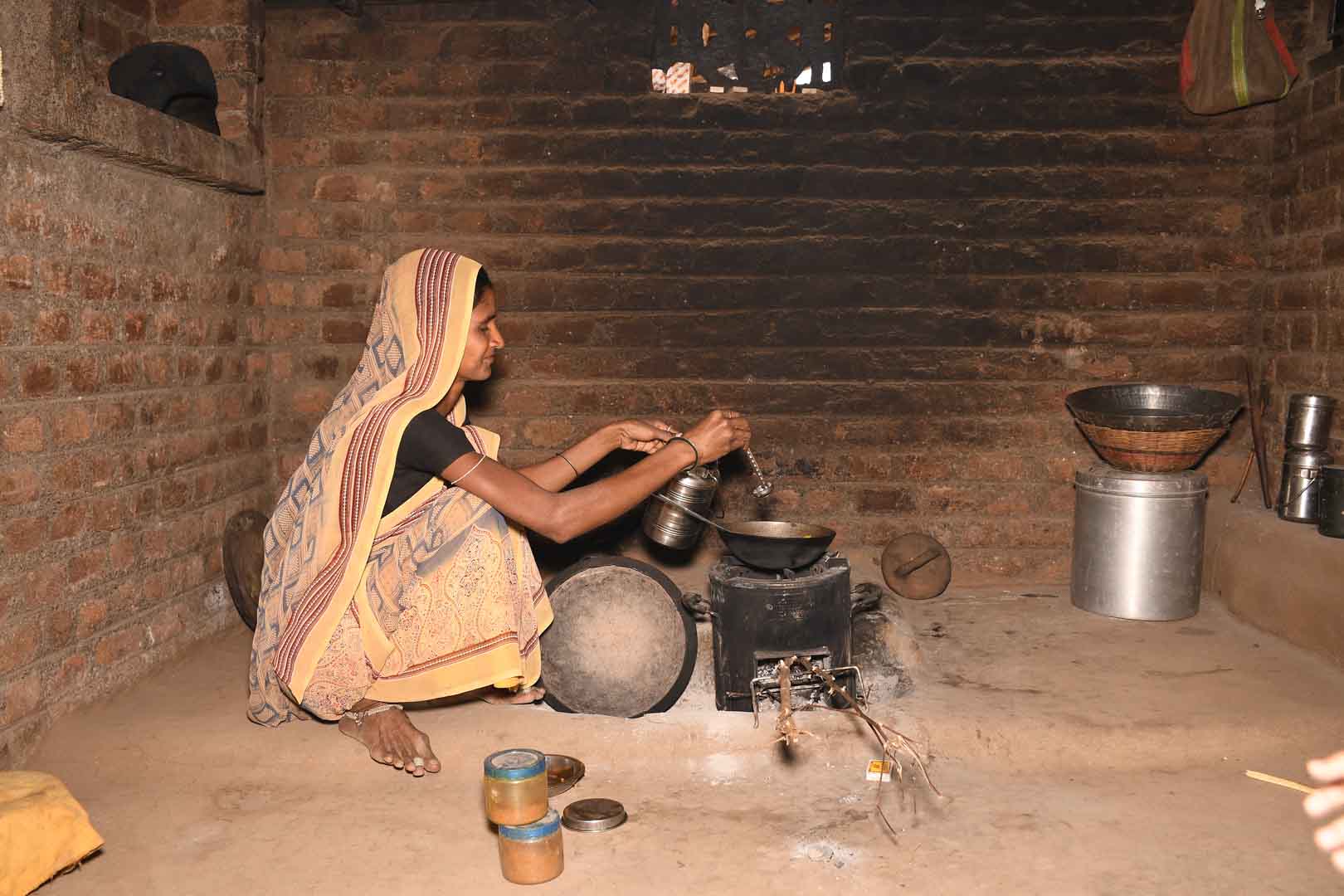
Improved cookstoves worldwide – for better health and cleaner air

A certified climate project combined with additional commitment
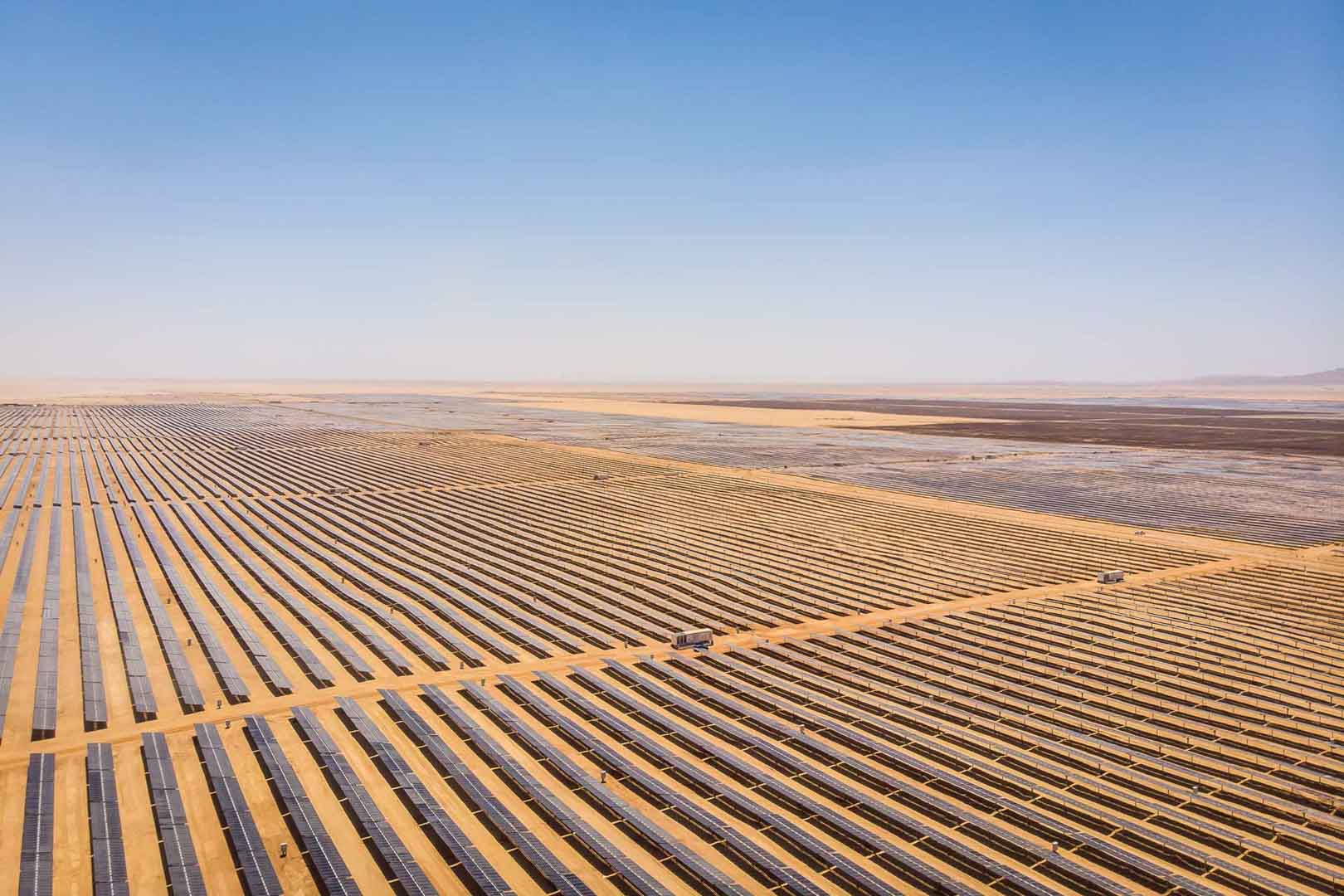
Powering access to renewable energy in Africa

A certified climate project combined with additional commitment
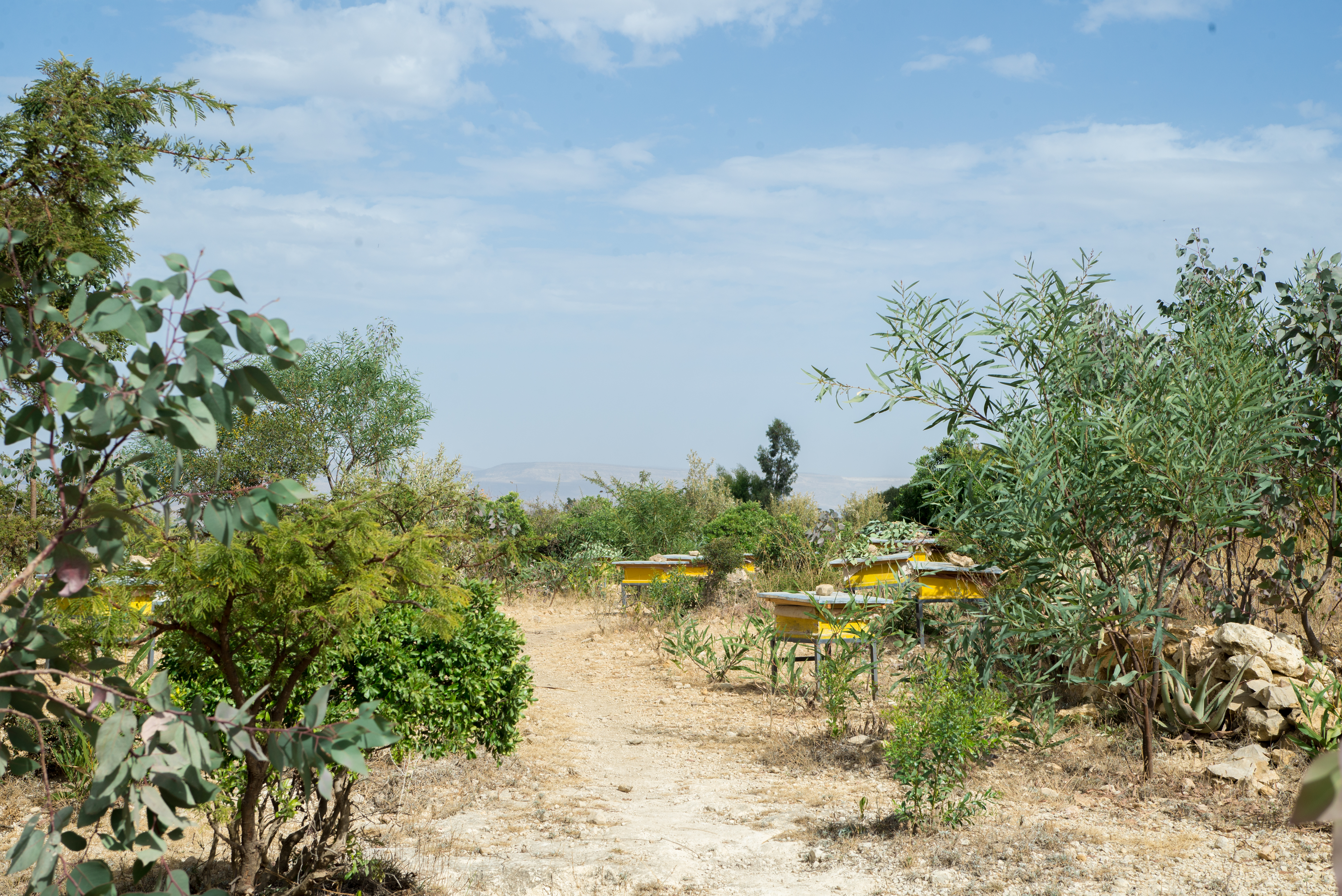
Restored ecosystems remove carbon
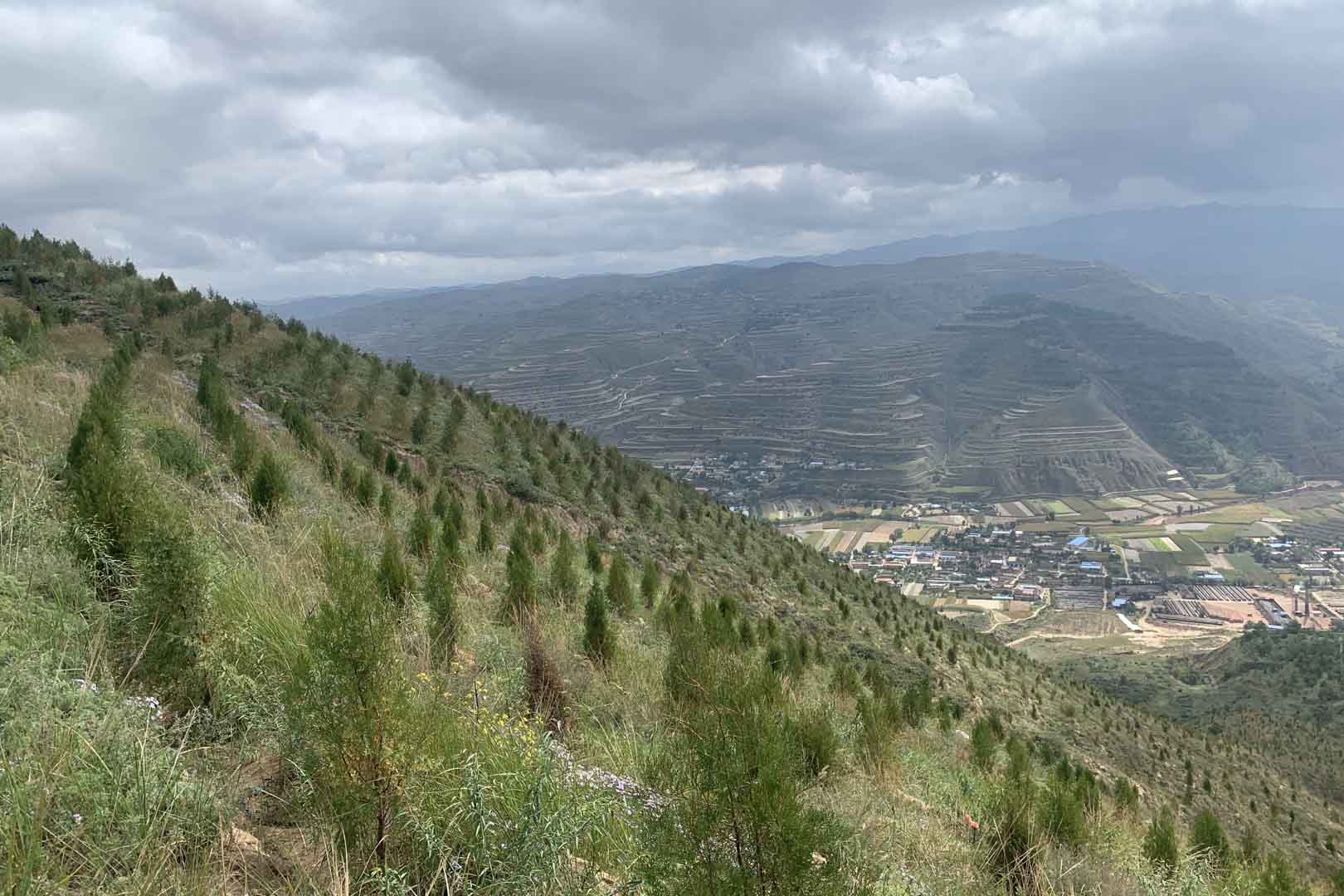
Turning degraded farmlands into healthy ecosystems
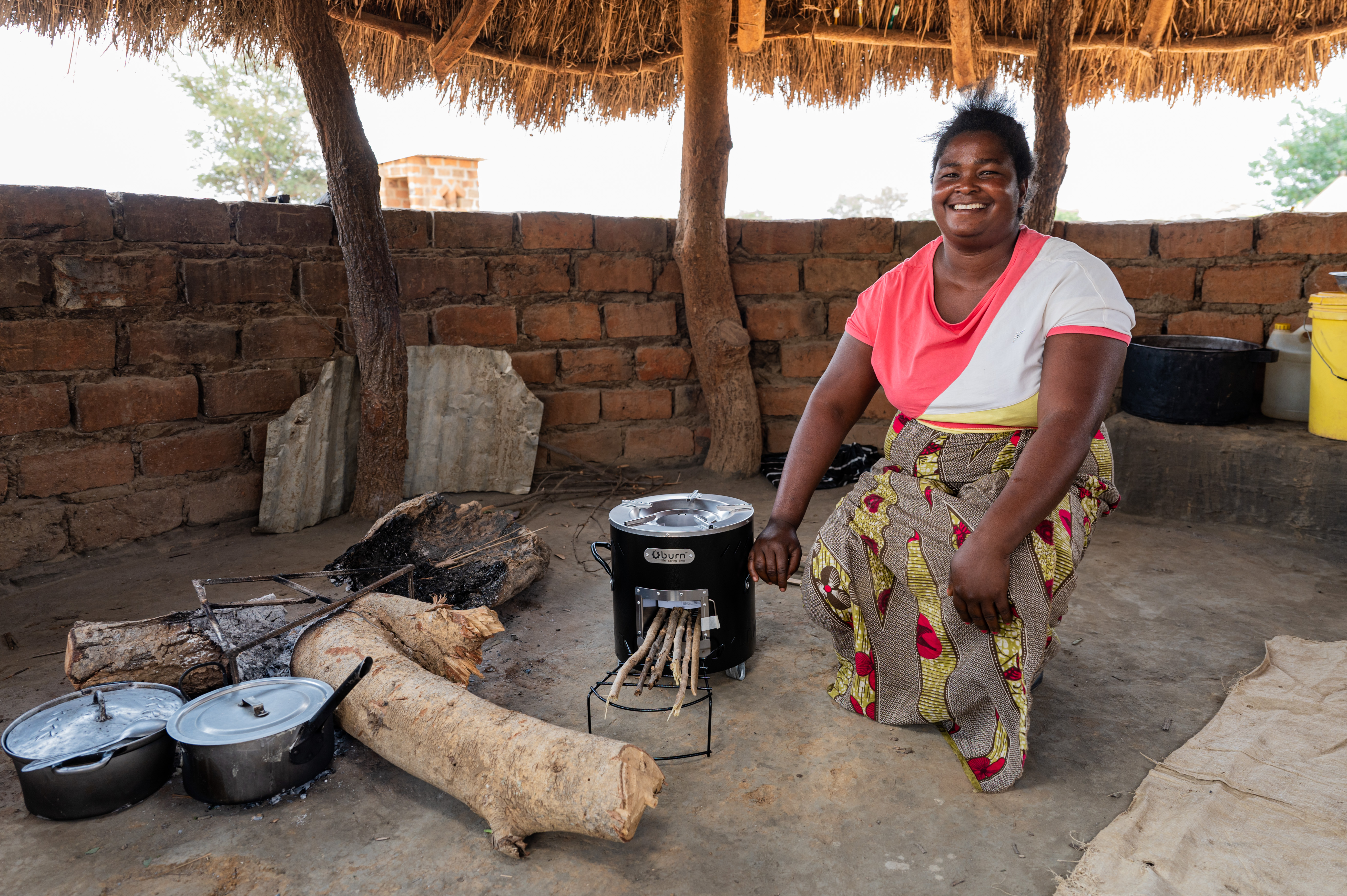
Improved cookstoves - better for health and the environment
